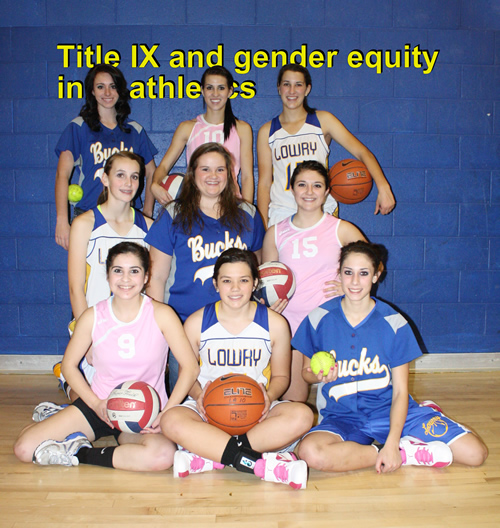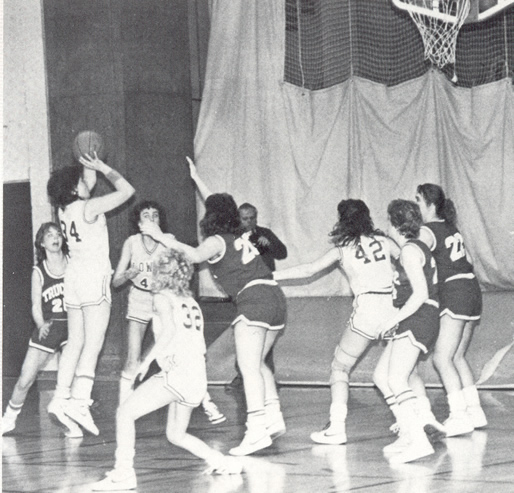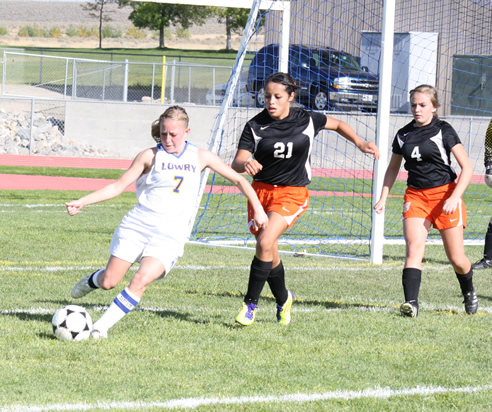By Brandon Eastman
Posted December 14, 2011
*41% of the students at Lowry are also athletes.
*53% of athletes at Lowry are boys.
*47% of athletes at Lowry are girls.
*Before Title IX, only 1 out of 27 girls played a sport.
*2.9 million high school girl athletes vs. 4.2 million high school, boy athletes.
*205,000 female collegiate athletes vs. 290,000 males collegiate athletes.
*Female college athletes receive $148 million less in athletic scholarships.
*Female participation in sports has increased by 456% at the collegiate level and 904% in high schools since the passage of Title IX.
*Title IX does NOT require equal spending on men’s and women’s programs. Although some people may not even know what Title IX is, in the eyes of some of those that do know what it is; it shouldn’t even exist.
According to senior Melanie Vance, “Male and female student-athletes should not be used as a statistic in order to make the lawmakers happy.”
Title IX is a law that was passed in 1972 that would require gender equality in all educational areas that would receive federal funding. The law applies to ten different areas of education, including higher education, career education, education for pregnant and parenting students, employment, learning environment, math and science, sexual harassment, standardized testing, technology, and athletics. In order to be in compliance with Title IX, your school must meet three criteria: 1) The institution’s ratio of male students to female students is similar to male athletes to female athletes (the proportionality test), 2) The institution shows a “history and continuing practice” of expanding women’s athletic opportunities, and 3) The institution shows that it has “fully and effectively” met the athletic abilities and interests of women.
“There should definitely be equality,” said Lowry graduate Nikki Bengochea.
Before this law was passed only one out of twenty-seven girls played a sport. The primary physical activity for girls was cheerleading and square dancing, and girls could not receive scholarships to play collegiate athletics. This was simply because: 1) Girls did not participate in sports as much as boys; and 2) It was not a requirement, at the time, to provide equal opportunities for women. The problem is that proportionality is the only “safe-harbor” standard to avoid further investigation by the Office of Civil Rights. (www.examiner.com)
At Lowry, 41% of the student population plays at least one sport, although, many of these student-athletes participate in multiple sports. There are approximately 370 student-athletes at Lowry. Of those 370 athletes, approximately 53% are boys, while 47% are girls. If you include football and wrestling as sports in which girls are allowed to participate, then Lowry does offer equal opportunities. Lowry offers seven girl’s sports (basketball, cross country, golf, soccer, softball, track and field, and volleyball) and eight boy’s sports (baseball, basketball, cross country, football, golf, soccer, track and field, and wrestling). The major problem with Title IX is that, in some schools such as Lowry, girls are allowed to wrestle and play football, but the boys are not allowed to participate in any of the girl’s sports… Are we really in compliance with the law?
“Technically, girls are allowed to wrestle and play football, but I don’t think they really count as part of Title IX,” said Bengochea.
Since Title IX was passed nearly forty years ago, opportunities for women have increased dramatically at all different levels of competition, ranging from high school sports to the Olympics. High schools have opened up more opportunities for girls to participate in sports, and new women’s professional leagues have developed in the United States allowing female athletes to continue their activities. Leagues such as the Women’s National Basketball Association (WNBA) and the National Pro Fastpitch (NPF) have provided women in the U.S. with opportunities equal to their male counterparts.
Two sports, however, that have not made a breakthrough in including females are wrestling and football. Participation in these two sports by females is very rare, if at all, which is why these two sports should not count as creating, equal opportunity. You could also include girl’s high school volleyball, in which boys are not allowed to compete.
“I still think that a lot of girls still just aren’t taking advantage of the opportunities available to them,” said Vance. “You see a lot of the same girls playing all the sports, while for the boys you see a variety of people.”
“I don’t think it should even be a law. It should be based on participation,” said senior Taylor Johnson. “If one gender isn’t going to participate, then why give them the opportunities if they aren’t going to take advantage of it?”
“If someone really wanted to play a sport that wasn’t offered, they would go somewhere else,” said senior Julia Dufurrena.
If they are going to participate, though, then the opportunities need to be made available to them.
In the almost 40 years since the ratification of this law, there have been twenty proposed amendments, reviews, and Supreme Court cases regarding the requirement, or supposed requirements, of gender equality. Thousands of high schools across the nation are not yet in compliance with this law.
“You can’t make this a law because it’s just not realistic, there is no way you can enforce that because so many sports are just offered for boys or girls,” said Bengochea. “If you are going to pass it, there can’t be any hidden rules.”
In a ruling last year by a United States federal judge, it was determined that cheerleading is no longer considered a sport because it is too underdeveloped and disorganized. Among the Title IX guidelines is a stipulation that a team’s primary responsibility is to compete, not just support other teams. This is a topic of great controversy, which has people across the nation in disagreement.
Johnson said, “They don’t compete on a regular basis, but what they do is still hard work.
Bengochea said, “They do compete and what they do requires great athletic ability.”
At the collegiate level, there are many more restrictions and a closer eye is kept on the programs in order to make sure the schools are in compliance with the Title IX law. At the high school level, the law is not followed as rigorously partly because there is not as much money involved (scholarships, smaller budget, etc…) Even though, the Office for Civil Rights is responsible for investigating any problems schools may face with Title IX, they rarely do, which causes many schools to not take the law as seriously as they should.











